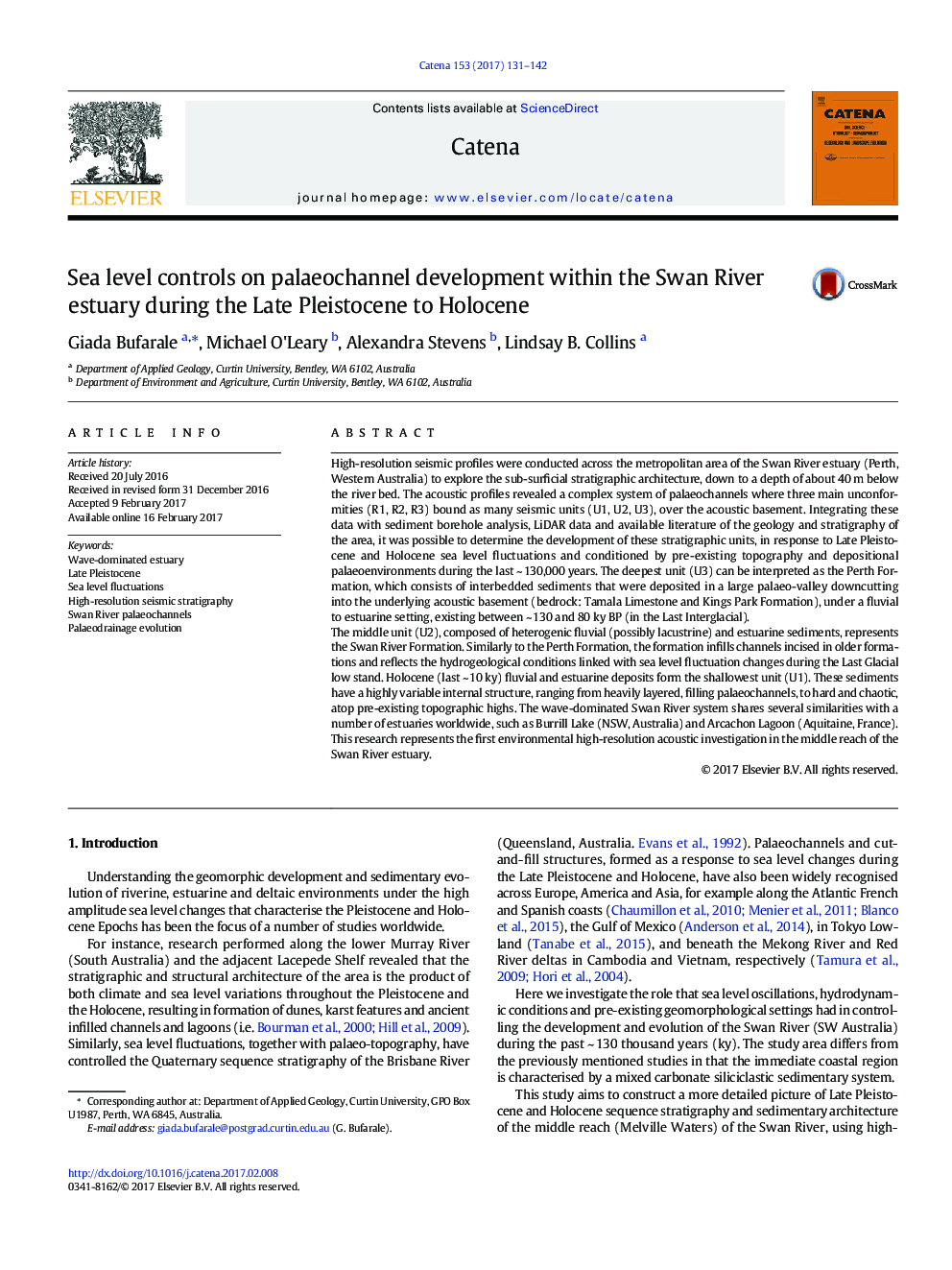| کد مقاله | کد نشریه | سال انتشار | مقاله انگلیسی | نسخه تمام متن |
|---|---|---|---|---|
| 5770157 | 1629201 | 2017 | 12 صفحه PDF | دانلود رایگان |
- First environmental high-resolution seismic study of the Swan River estuary.
- Effects Late Pleistocene and Holocene sea level changes on Swan River estuary.
- Palaeochannel patterns defined.
High-resolution seismic profiles were conducted across the metropolitan area of the Swan River estuary (Perth, Western Australia) to explore the sub-surficial stratigraphic architecture, down to a depth of about 40Â m below the river bed. The acoustic profiles revealed a complex system of palaeochannels where three main unconformities (R1, R2, R3) bound as many seismic units (U1, U2, U3), over the acoustic basement. Integrating these data with sediment borehole analysis, LiDAR data and available literature of the geology and stratigraphy of the area, it was possible to determine the development of these stratigraphic units, in response to Late Pleistocene and Holocene sea level fluctuations and conditioned by pre-existing topography and depositional palaeoenvironments during the last ~Â 130,000Â years. The deepest unit (U3) can be interpreted as the Perth Formation, which consists of interbedded sediments that were deposited in a large palaeo-valley downcutting into the underlying acoustic basement (bedrock: Tamala Limestone and Kings Park Formation), under a fluvial to estuarine setting, existing between ~Â 130 and 80Â ky BP (in the Last Interglacial).The middle unit (U2), composed of heterogenic fluvial (possibly lacustrine) and estuarine sediments, represents the Swan River Formation. Similarly to the Perth Formation, the formation infills channels incised in older formations and reflects the hydrogeological conditions linked with sea level fluctuation changes during the Last Glacial low stand. Holocene (last ~Â 10Â ky) fluvial and estuarine deposits form the shallowest unit (U1). These sediments have a highly variable internal structure, ranging from heavily layered, filling palaeochannels, to hard and chaotic, atop pre-existing topographic highs. The wave-dominated Swan River system shares several similarities with a number of estuaries worldwide, such as Burrill Lake (NSW, Australia) and Arcachon Lagoon (Aquitaine, France). This research represents the first environmental high-resolution acoustic investigation in the middle reach of the Swan River estuary.
Journal: CATENA - Volume 153, June 2017, Pages 131-142
